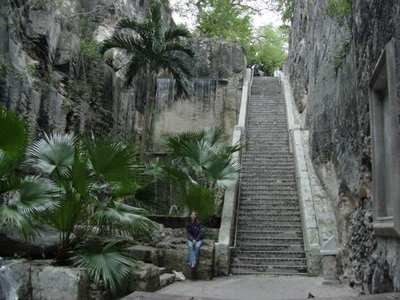Queen's Staircase


Hand-carved from solid limestone rock
by 600 enslaved people, the Queen’s Staircase was built between 1793 and 1794 to provide a direct route from Fort Fincastle, a battery protecting the entrance to
Nassau
Harbor (notorious in that era for attracting pirates and geopolitical intrigue) to the central part of the Bahamian capital.
In the 1800s, the massive, 65-step staircase was named in honor of Queen Victoria, who had signed a declaration abolishing slavery on her ascension to the throne in 1837 before reigning for 64 years. The 700-island archipelago of the
Bahamas
is today an independent Commonwealth, having separated from the
United Kingdom
in 1973, but still nominally ruled by the British monarch.
Today the staircase is the centerpiece of a stunning tropical grotto replete with swaying palms, waterfalls, and an unusual set of bathrooms hewn directly out of the 100-foot sheer limestone walls like the rock-gouged temples at Petra. Exquisite at any time of day or night, after dark the staircase becomes a quiet, cool, lush, and romantic oasis barely a mile from the bustling downtown and cruise ship docks of modern Nassau.